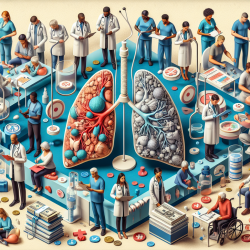Introduction
Female Genital Mutilation/Cutting (FGM/C) remains a pressing global health issue, affecting over 200 million girls and women worldwide. The practice, which involves the partial or total removal of external female genitalia for non-medical reasons, has profound health implications. As practitioners, understanding the role of the health sector in managing and preventing FGM/C is crucial for improving outcomes for affected individuals. This blog explores the findings from a comprehensive study on health sector involvement in FGM/C management across 30 countries and offers insights for practitioners to enhance their skills and impact.
Research Overview
The study employed a mixed-methods approach to assess the involvement of the health sector in managing FGM/C in both countries of origin and countries of migration. Data were collected using a pilot-tested questionnaire from 30 countries, supplemented by interviews to ensure data accuracy. The findings revealed that 24 countries had policies on FGM/C, with varying levels of implementation, funding, and coordination.
Key Findings and Implications for Practitioners
- Training and Education: Systematic training of healthcare providers (HCP) on FGM/C was more prevalent in countries of origin. Practitioners should advocate for comprehensive training programs that cover clinical management, cultural competence, and legal responsibilities.
- Prevention and Reporting: In countries of migration, HCP involvement in FGM/C prevention was more common. Practitioners should be aware of their legal duties to avert and report FGM/C cases, balancing ethical considerations with patient confidentiality.
- Service Availability: The availability of healthcare services for FGM/C-related complications varied. Practitioners should ensure access to necessary services, including deinfibulation, clitoral reconstruction, and psychological counseling.
- Medical Documentation: Systematic recording of FGM/C in medical records was lacking. Practitioners should advocate for the adoption of medical codes for FGM/C to improve data quality and healthcare provision.
Encouraging Further Research and Collaboration
While significant progress has been made, there are still areas for improvement, particularly in monitoring and evaluation. Practitioners are encouraged to engage in further research to explore the effectiveness of different health sector strategies in FGM/C management. Collaborative efforts across sectors and countries can enhance the sharing of best practices and resources.
Conclusion
The involvement of the health sector in FGM/C management is crucial for both treatment and prevention. By implementing the study's findings, practitioners can improve their skills and contribute to better health outcomes for affected individuals. For a deeper understanding of the research and its implications, practitioners are encouraged to read the original research paper.
To read the original research paper, please follow this link: Health sector involvement in the management of female genital mutilation/cutting in 30 countries.










